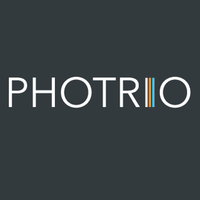Answer - I have probably done more critical tests with Portra 160 than any commercial lab because I've adapted it to a far more stringent hue repro application than required by general photography.
I actually asked if you'd done the test I was talking about.
I don't doubt that you were doing more critical hue related tests. We were a mass market portrait outfit, doing mostly machine prints to a standard. Nominal 5cc color tolerance, but probably 2/3 of our work was within 2cc during our "normal" part of the year. At peak times, near Christmas, for example, the production nearly doubled. So lots of new seasonal help, and certainly we shipped a lot of crap in those days, I'm pretty sure.
But before we committed to a new film, such as when Portra first came out, we did pretty extensive testing to see what problems we might encounter. This would always include an extended exposure sequence. And we would get very finicky with this sort of thing. Because we're gonna be committed longer term.
As I previously stated, after hand balancing to match, professional color correctors could essentially not tell the exposures apart, on the basis of color. Within the range I stated. Perhaps you could have told them apart, perhaps not; I dunno. All of our color corrector had been screened with the Munsell some-number hue test. Out of 60 or 80 people on file I think 3 stood out. These 3 could do the test rapidly, bam, bam, bam, and get a perfect score; no doubt in their mind. I would guess that those people might have been able to determine the differences; I dunno. But they stood out from more "normal" people.
But again, since you said you disagreed with the test results I described, but for CURRENT Portra 160, I asked, did you do the actual test? From your response I am guessing not.
I've also had several personal friends and clients of my own who owned enormous professional labs with the very best equipment.
Is this really relevant? Do you really wanna go there?
With those kinds of choices around me, in one case right across the tracks from my own office, do you think I'd be gambling with anything less than the highest standards of process control when it came to developing my own C41 and E6 needs?
Well, I dunno; that's why I asked. So did you just trust on their reputation? When we did our testing we verified, via attached control strips, that this specific film was seeing a well-centered process.
FWIW there is a fairly wide tolerance range on process control charts. A lab could easily have a 10% replenishment offset in either direction and be considered in "good control." Does this matter? I dunno; we didn't test for that. We just made sure that the plots were about as centered as they could be when we ran the tests.
I don't know where you were located; but it would be a mistake to think that demand or quality control would have been anything lesser on the West Coast.
I don't think that West Coast would necessarily have lesser QC; I don't know why you would say that. I would say that just about any competent lab techs, given adequate equipment, could have the same level of process control. Provided that their management allows (or demands) it. But I don't think it can really be done in something like a Jobo rotary processor or even a dip n dunk machine. (The Jobo is limited in developer volume, plus oxidizes the developer during operation. And the dip n dunk machine has variable development time (I believe), depending on which end of the hanging roll (please correct me if I'm wrong, dip n dunk owners). Plus the dip n dunk is gonna be agitation limited; don't wanna blow the film around.
In the outfit I was from, the lab(s) functioned more like a picture factory. You set things up like a factory, running with as tight a tolerance at each step as can be done at reasonable cost. High volume work, very efficiently done. Working toward a specified tolerance for the final product, and a limited product range. Whereas a "normal" pro lab caters to the pro photographer customer, more along the lines of a custom shop. Less efficient production... has to be more expensive. Greater variability in the incoming film - different film types, more variable exposures. So more than likely more variation in the control charts.













